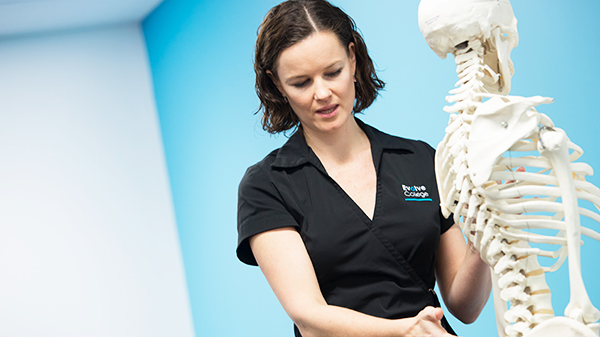
THE BENEFITS OF MASSAGE - PART 4 - HEART ATTACK
07 Nov2016
Posted by Evolve College News
In part 4 of this series, we continue to look at research into the benefits of massage. Last week, we looked at massage and artery bypass surgery, following our previous two publications on massage and arthritis, and massage and cancer.
This week, we look at massage after heart attack.
Cardiovascular diseases are the number one cause of death globally. More people die annually from cardiovascular diseases than from any other cause. An estimated 17.5 million people died from cardiovascular diseases in 2012, representing 31% of all global deaths. (World Health Organisation Cardiovascular diseases Fact sheet, Reviewed September 2016.) Cardiovascular disease kills one Australian every 12 minutes. (The Heart Foundation, Heart disease in Australia, Cardiovascular disease, heart disease and heart attack)
A study conducted by the Jahrom University of Medical Sciences, Jahrom, Iran*, assessed the effects of massage therapy on physiological responses in patients with congestive heart failure.
The study quotes that almost 50% of patients with congestive heart failure experience stress symptoms such as uncertainty, anxiousness and depression and these symptoms appear to increase the length of hospital stay and decrease the quality of life.#
The study was conducted in two Cardiac/Coronary Care Unit wards of hospitals of Jahrom, Iran. There were 50 participants in the study, who were recruited to participate within 24 hours of being admitted to the cardiac ward. Participants commenced receiving massage 3 days after hospitalisation in order to not disturb their medical treatment plan. The study collected data on blood pressure, heart rate, respiratory rate and blood oxygen satisfaction 30 minutes before and after back massage was performed.
The study showed that the level of cardiopulmonary distress declined significantly after the first day of massage, and this happened again after the second and third days of massage. Blood pressure rates were reduced, heart rates reduced, breathing rates declined significantly (on day 1 and day 3), and blood oxygen saturation levels significantly increased compared to pre-intervention in this study.
The study concluded that massage therapy can be used as a complementary method to stabilise vital signs following congestive heart failure.
The study further concluded that the observed alterations in the vital signs of patients can be important because the changes would reduce the myocardial oxygen demand. The study concluded that it can be recommended that massage therapy be used to balance the vital signs of patients admitted in a Cardiac/Coronary Care Unit.
Next week we continue this series and look at massage and post-menopausal insomnia.

REFERENCES:
* Jamali S, Ramezanli S, Jahromi M. K, Zare A, Poorgholami F. Effect of Massage Therapy on Physiologic Responses in Patients with Congestive Heart Failure. Biosci Biotech Res Asia 2016;13(1)
# See below studies:
Chen, H.M., Clark, A.P., Tai, L.M., & Lin, C.C.(2010). Self-reported health related quality of life and sleep disturbances in Taiwanese people with heart failure. J CardiovascNurs, 25;503– 513.
Moser, D.K.,&Worster, P.L.(2000). Effect of psychosocial factors on physiologic outcomes in patients with CHF. J CardiovascNurs ,14,106–115.
Moser, D.K., Dracup, K., & Evangelista, L.S.(2010). Comparison of prevalence of symptoms of depression, anxiety, and hostility in elderly patients with heart failure, myocardial infarction, and a coronary artery bypass graft. Heart Lung 39,378–385.
